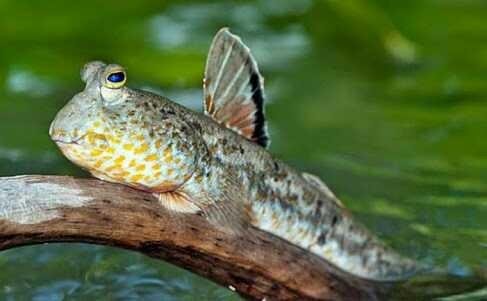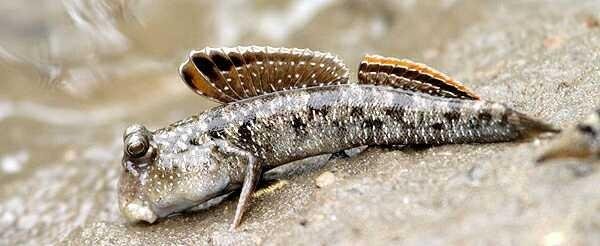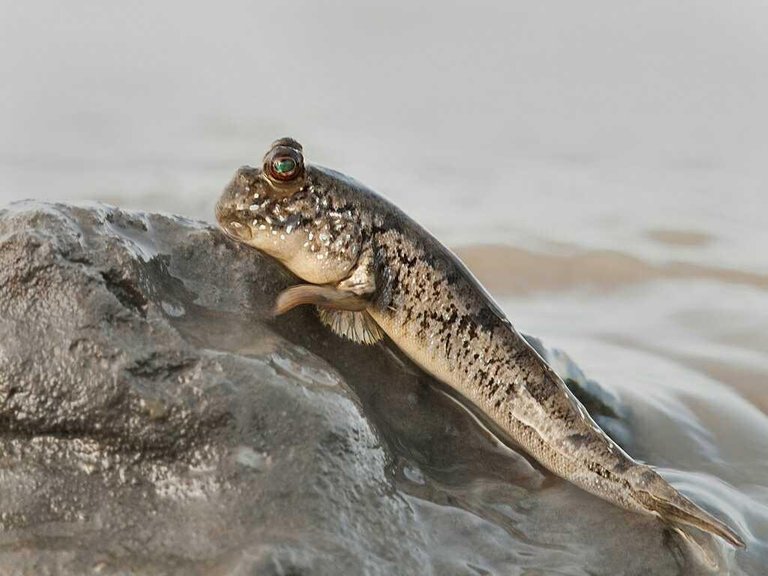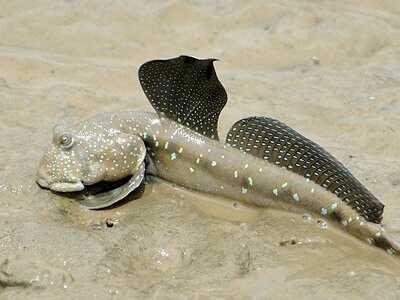Kalimantan is the largest island in Indonesia that holds a million unmatched natural wealth. Until now the natural wealth in Kalimantan is endless and certainly very unique compared to others.

Like one of the natural wealth in the sea of Borneo. Mudskipper fish or so-called timpakul, tembakul, gelodok, belodok, belodog, blodog or belacak (Malay), sea cork, lunjat and others. In English is called mudskipper, because of his habit of jumping around in the mud. Even these fish can climb trees and say, the largest population of these fish is in Borneo.

This fish is very fond of jumping to the brackish water land and can be found in the mangrove forests when the water is receding. Both eyes are very prominent as the eyes are glaring out with two arrangements of cornea and side skin inside the eye in layers to hold water and avoid drought when on land. The fins swell with a long body shape. If grown, this fish can reach 30cm.

Mudskipper fish can hold for 7-8 minutes on the mainland before returning to the water again. Can live in water and on land, the fish's respiratory organs are in fact gill-shaped which has a difference where the inner sides of the gill wall and gill booth multiply and have many blood vessels. Throughout the gills and throat remains wet to allow for the exchange of oxygen in the blood vessels when the fish is inland.
Normal hunting fish dig holes in soft mud for its nest. The hole can be very deep and branched, filled with water and a little air in certain spaces. As the tide rises, Mudskipper generally hides in these holes to avoid the predatory fish coming.

Males have some sort of copulation tool on their genitals. After the mudskipper egg-egg marriage is stored in a hole that he has dug and guarded by his mother. The eggs are sticky and cling to the mud walls. Mudskipper Periophthalmodon schlosseri can lay up to 70,000 eggs in the breeding season.
If hungry Mudskipper preys on many animals ranging from laundry ketam (Uca spp.), Shrimp, fish, shellfish, squid, to the ants ngangrang and flies. Plants were said to be eaten by this fish.

According to the study, this fish has 35 species of species that are divided into 3 major groups, namely Boleophthalmus, Periophthalmus and Periophthalmodon. Mudskipper is also included in the Oxudercinae clan. Fish that can live in tropical and subtropical waters whose territory ranges from the Indo-Pacific to the Atlantic coast, this African continent can survive even though the surrounding environment is being damaged. This gelodok fish has been around since 22.5 million years ago and survive until now.
OMG! Not only is the mudskipper absoulutely adorable....it's a fish after my own heart <333 a forest loving fish!
You literally just made my day with this post :) Thank you for that!
Bright Blessings <333
what an amazing fish! thank you for this!
Thank's
Congratulations @Rudiefendi! You have been nominated for our next contest for making an great post about nature. There will be 25 nominees, and the winner will be choose randomly using random.org. All the nominees have will have an equal chance of winning. The winner will be announced on February 19th, and they will be receiving 1 SBD.
The Remote Discovery Channel plans on resteeming unique blogs from around the world. Our goal is to help the Steem community discover interesting places and remote destinations. Let us know if you have ideas or suggestions for future contests. We appreciate your support.
Resteemed to over 13300 followers and 100% upvoted. Thank you for using my service!
Send 0.200 Steem or 0.200 Steem Dollar and the URL in the memo to use the bot.
Read here how the bot from Berlin works.
We are happy to be part of the APPICS bounty program. APPICS is a new social community based on Steem. The presale was sold in 26 minutes. The ICO will start soon. Read here more: https://steemit.com/steemit/@resteem.bot/what-is-appics
@resteem.bot
Wow amazing fish ♥♥